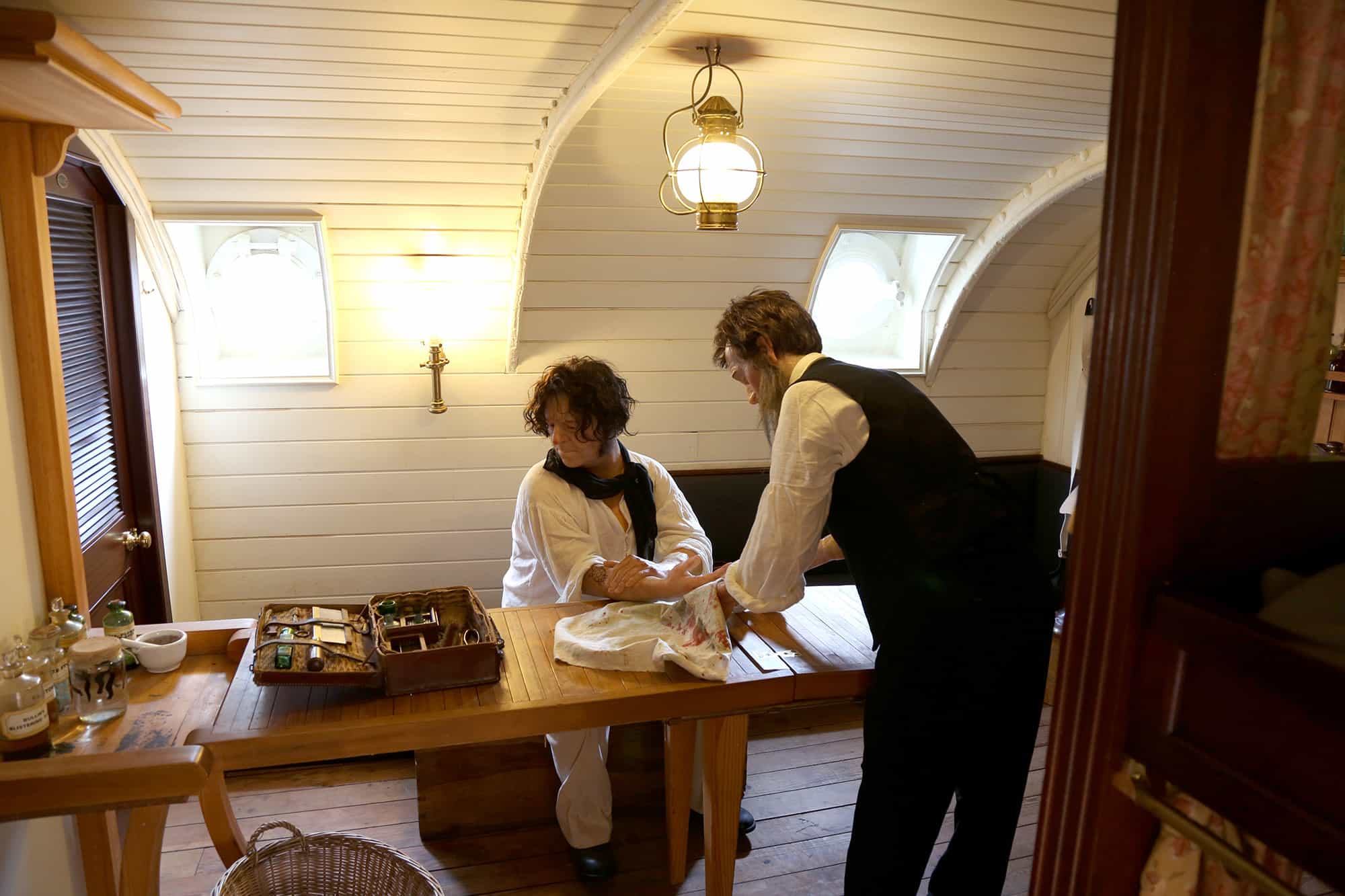The Picture
- In 1857 the SS Great Britain was travelling to and from Australia, on board was ship’s surgeon Samuel Archer. During his journey Archer kept a diary, in it he wrote about what life was like for him and the other passengers and crew. The original diary is in Australia at the National Library of Victoria, we have a transcript (typed copy) of the diary in our collection.
- The surgeon Archer was responsible for the health of everyone on board, from removing teeth and making medicines to treating sick and dying patients. Medical treatments have changed a lot since Victorian times, and we don’t know what some of the treatments Archer writes about using are unfamiliar.
- Only a few bits of Samuel Archer’s diary talk about medical treatment and his job as the ship’s surgeon. He seems to be more interested in nature and writes a lot about the shells and sea creatures he collects during the voyage.
- Today, visitors to the SS Great Britain can explore a recreation of the first-class cabin Samuel Archer worked and slept in onboard the ship.
We’d like to thank Lizzy for the work she did towards this collection story as part of her placement, and Malcolm for his research on Ship Surgeons and the SS Great Britain.
The Story
Illness and injury on board the SS Great Britain
During her 41-year working life, the SS Great Britain carried over 30,000 passengers and crew, of all ages and backgrounds. Although most people thought of it as a healthy ship, there were still many illnesses and injuries on board and over 140 deaths were recorded.
Some illnesses can be passed on from person to person, and these spread quickly in a crowded ship. Measles, typhoid and cholera all caused deaths. Smallpox was common at the time, but the SS Great Britain carried supplies of the vaccine and only two deaths from smallpox were recorded. The most common cause of death on the SS Great Britain was tuberculosis – known as “consumption” in the 19th century, an infectious disease which affects the lungs.
More injuries were recorded amongst the crew than the passengers. Working the sails could be dangerous and some crew members suffered serious falls. George Green, for example, was taking in the upper main topsail during a hurricane when he fell into a lifeboat. Some of his bones were broken and he died straight away.
Continue The Story
The job of a ship’s surgeon
From 1852-1876, twelve different surgeons worked on the SS Great Britain. Some, like William Walsh, only served for one voyage, while others, like Andrew Alexander, worked on many voyages.
All the surgeons were men, and most of them were young. Samuel Archer, for example, was only 21 when he began working on the SS Great Britain. In the mid-19th century, passenger sea travel was becoming very popular, and it is likely that some ship’s surgeons saw their job as a way to see the world while getting paid!
Surgeons on the SS Great Britain had to look after the health of everyone on board. They often had to focus on illness and injury amongst the crew rather than the passengers, because if the crew couldn’t do their jobs it would delay the journey and the shipping company would lose money. Their job wasn’t just about treating illnesses and injuries. They also helped make sure the ship was clean and the passengers and crew were living a healthy lifestyle and behaving themselves!
The surgeon would have had a “medicine chest”, containing medicines and other supplies for treating unwell passengers. Many of the treatments we use today had not been discovered, but laudanum could be used for pain relief and vinegar could be used to kill germs.



